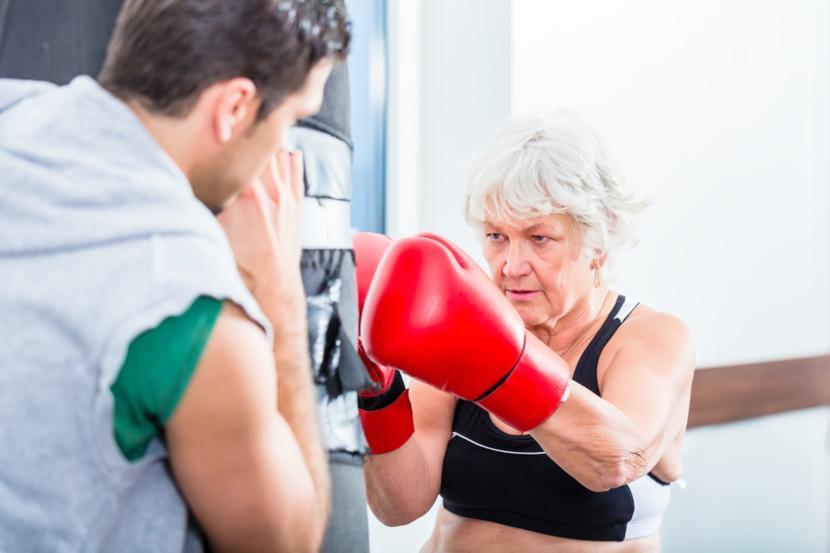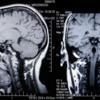Knocking Out Parkinson's: How Boxing is Effective for Parkinson's Patients

Parkinson’s disease is a progressive disorder of the central system that primarily affects the motor system and movement capabilities of the patients. The symptoms of Parkinson’s disease usually appear slowly overtime but are generally dominated by shaking, rigidity, slowness when patients try to move and total difficulty in locomotion. As the condition progress, mental and behavioral problems may set in. In advanced cases of Parkinson’s, dementia, depression and anxiety are more common, affecting over a third of people with the Parkinson’s disease. Sensory, emotional and sleep disorders may also be symptoms of the disease.
The gradual appearance of symptoms may appear with an almost unnoticeable tremor in one of the hands and stiffness or impeded movement often follows. Some cases have been recorded where patients are unable to show any or little facial expression with arms refraining from swinging while walking. Slurred or soft speech can also manifest in some cases. The symptoms of Parkinson’s disease are grouped as neurological and motor. For motor symptoms, there are usually four manifestations considered as cardinal when Parkinson’s disease is concerned: Tremor, rigidity, postural instability and bradykinesia. As earlier noted, tremors are most common and the frequency of the Parkinson’s disease tremor ranges anywhere between 4 to 6 cycles per second.
As of now, Parkinson’s disease cannot be cured, but the use of medications has shown promise and marked improvements of the symptoms. In some cases, surgery may be used to regulate certain regions of the brain and light exercises may be recommended. The main cause of the Parkinson’s disease is yet to be identified, but extensive research has named genetics and environment to be two highly probable factors. Studies have shown that people who have Parkinson’s disease are more likely to have the disease befall a family member themselves and there is an increased vulnerability for people who have been exposed to pesticide and head injuries. There is however less of a likelihood for Parkinson’s disease in people who drink tea or coffee and tobacco smokers.
Along with the wide array of medical and physical therapies being evaluated to better the symptoms of Parkinson’s disease, general participation in sport and exercises is shown to bring many physical and mental health benefits as it provides an opportunity to heighten and improve mood through the release of accumulated stress, tension and pent-up energy. Physical activity helps patients to take some mental “time-out” from the worries and problems faced by their condition. It is also a panacea to connect with other people and experience a feel food vibe about the positive actions being taken to improve one’s health. Exercise has been shown to trigger the release of Dopamine in the brain, an endorphin that is associated with a feeling of relaxation and happiness and reduced production of the cortisol hormone that is associated with stress in the body. The engagement in many dopamine-releasing activities is very imperative for patients with Parkinson’s disease. This is because of the fact that there is reduced dopamine production arising from the death of cells in the substantia nigra of the midbrain for patients with Parkinson’s disease.
Non-contact boxing is shown to have a positive effect on the symptoms of Parkinson’s patients as it engages them in a focused and disciplined activity, which subsequently aids in managing depressing feelings, anger, despair, sadness and hopelessness. The non-contact for kickboxing initiative has started from the Rock Steady Boxing, a not-for-profit organization that aims to improve the quality of life of patients by providing a venue and medium for exercise through non-contact boxing. The exercise has been found by researchers to boost motor skills, balance, coordination and speech, and studies have revealed that Parkinson’s patients should engage in some form of exercise at least 150 minutes weekly. The same report also shows that exercising patients with Parkinson’s disease also experience a slower decrease in the quality of life and better managed symptoms of Parkinson’s disease.
But, what's the big deal about non-contact boxing?
Non-contact boxing lends patients exercise routines that are majorly adapted from boxing drills that vary in intended effects and form. Essentially these exercises and movements are all designed to improve speed, flexibility, muscular stamina, accuracy, footwork, locomotion, hand-eye coordination and overall body strength. It aims to use the activities of rigorous boxing mechanisms to emphasize gross motor movements, balance, strength, rhythm, posture, gait and flexibility. More recent studies have emphasized the beneficial effects of intense “forced” exercises in slowing down the progression of the Parkinson’s disease as certain kinds of exercises can be deemed as neuroprotective.
Boxing on its own stirs up vigorous activity in the body that rates a 5-6 score on the perceived exertion scale. This type of aerobic activity has been shown to be enough and equivalent to that required by the body to fuel the creation of new brain cells. This neurogenesis process is highly beneficial in maintaining brain activeness and can offer benefits in reducing the mental degradative symptoms of the Parkinson’s disease.
The vigorous aerobic activity is also suggested to increase the efficiency and rate at which the brain utilizes the dopamine endorphins, which is drastically essential for the stimulation of the body’s motor nerve system. Apart from the boosted brain cell capacity, non-contact boxing and intense aerobic activity may contribute to the neuroplasticity of the brain. Neuroplasticity refers to the ability of the brain to preserve old connections, restore lost associations and produce new connections.
According to a study conducted by Giselle Petzinger, an assistant professor at the University of Southern California that specializes on neurology and movement disorders, intense, specific and complex exercises such as non-contact boxing aids walking and other motor skills in people suffering from Parkinson’s disease. For better effects, Rock Solid Boxing, the initiators of the non-contact boxing for Parkinson movement recommends boxing sessions done in group settings as it helps in boosting mood, reducing anxiety and stress as well as the improves peer support, confidence, hope and companionship.
The effects on non-contact boxing is of tremendous amount of advantage when its mental and physical aspects are considered. The sport allows many Participants to adopt an improved perspective on life on realization that they are not alone and there exist many others facing the same challenges and obstacles. The ability to improve the mentality that the Parkinson’s disease is not going to kill patients is a crucial way of introducing fresh perceptions of purpose into the life of many.
The sport is also beneficial in providing a context in which people living with Parkinson’s disease allow other people such as fitness coaches and personal trainers interact and do the thinking for them. Non-contact boxing can serve as a frame work for anger management and expulsion of negative energy in a manner that is healthy. By doing a set of repetitive activities, non-contact boxing helps to build the concentration and determination of participants with Parkinson’s disease.















